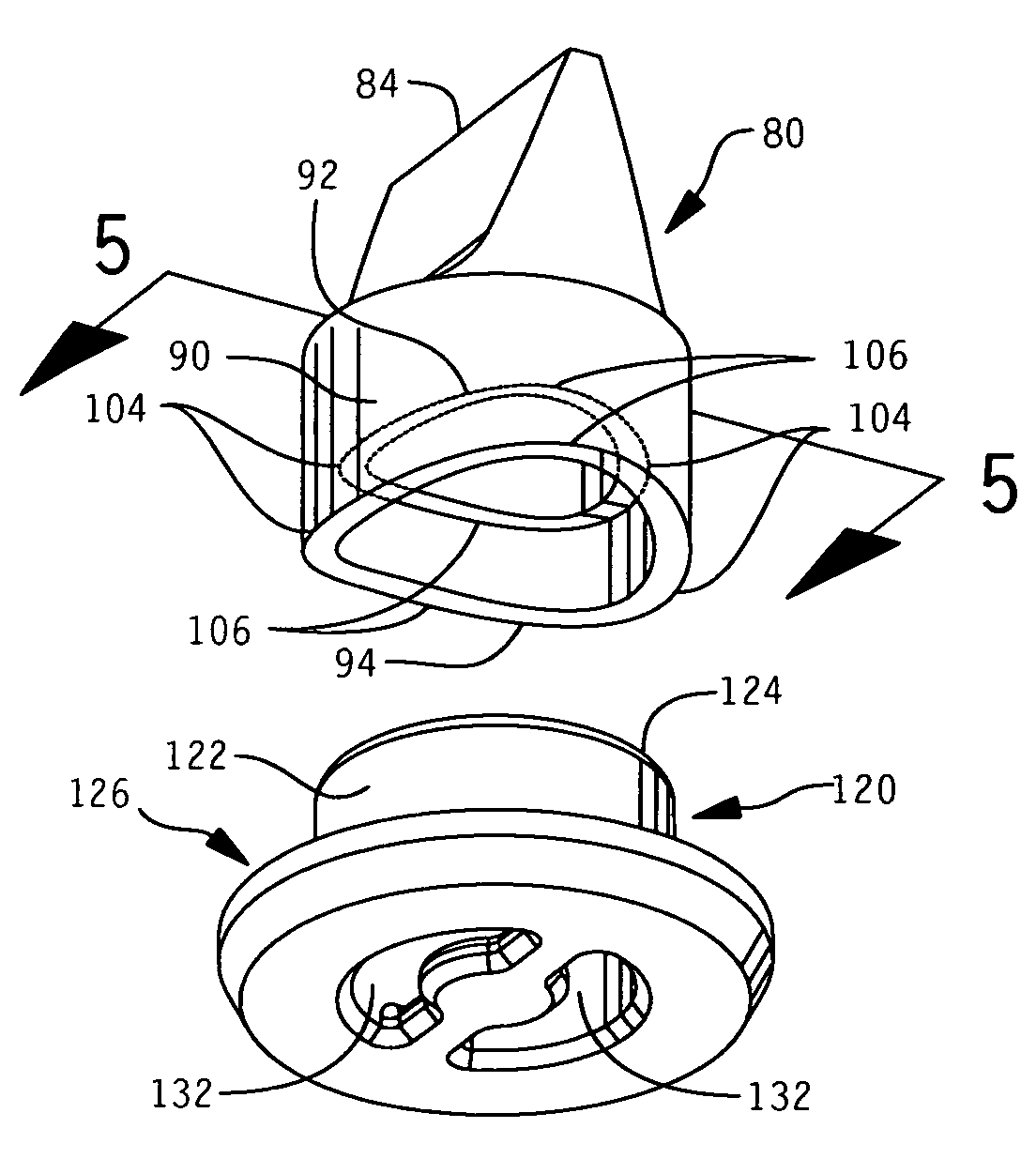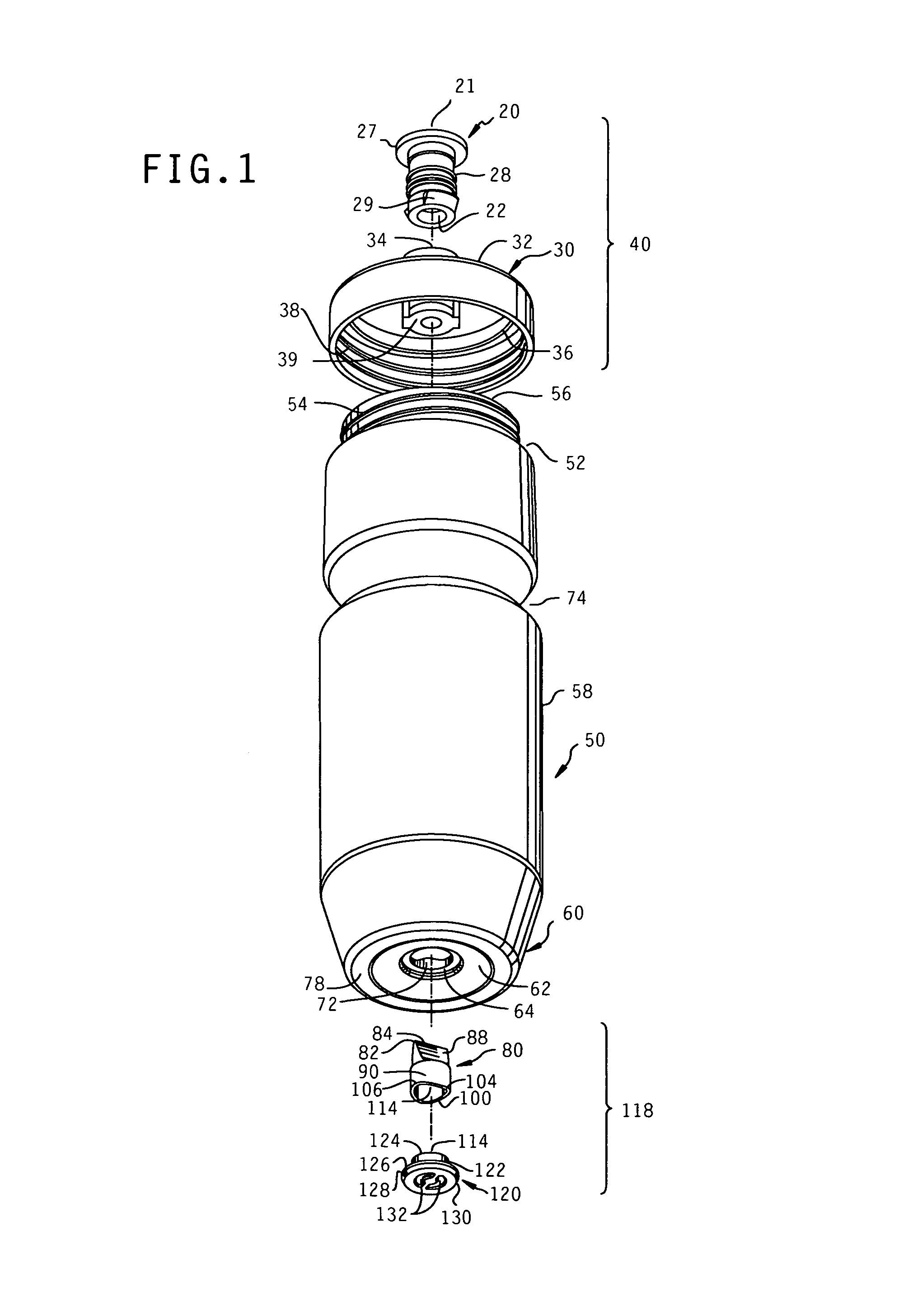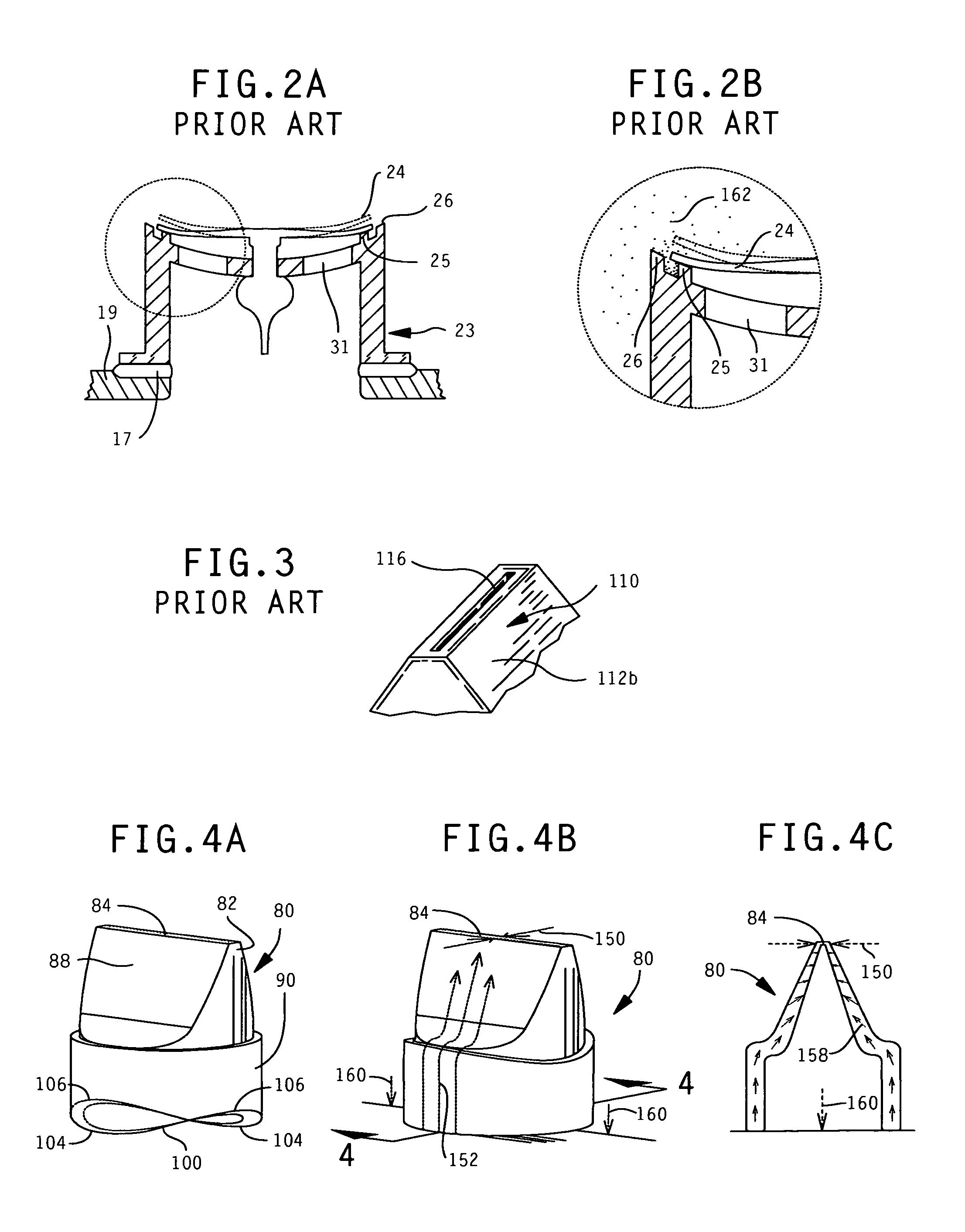However, maintaining an effective leak seal has been difficult to achieve.
Multiple prior bottles have been patented which include bottom-mounted valves intended to improve the dispensing and flow aspects of the container, but effective prevention of leakage has been elusive.
The properties of these liquids present immense sealing challenges for check valves, and have a tendency to cause leakage failure in such prior art bottles.
However, the inside wall, and in particular, the inside bottom-wall is subject to a significant and unpredictable variation in wall thickness, and in many bottles, an uneven seam.
Hence far, the following problems have made effective sealing and market success elusive: a) Valve structure susceptible to the formation of leak paths b) Valve structure susceptible to shock forces c) Inconvenient cleaning d) Modern sports liquids contaminating valve sealing faces e) Valve
distortion due to mounting within uneven container bottom-walls.
However, neither of these patents accomplishes an affirmative valve, or seal, closure, thus they are not suitably effective for preventing leakage of sports liquids.
a) The configuration of the valve is vulnerable to leakage when used with impure, sports liquids. It is well known that umbrella, or disc, valves are highly dependent upon a high degree of
surface flatness to accomplish an effective seal. This is partially due to the rigid nature of the seating surface. However, when such valves are used with sports beverages, residues and films easily build upon the seating surface, altering its surface properties and permitting leak paths to form. With the valve being beneath the
fluid level of the container,
liquid pressure causes the valve to leak. Flinn makes
no reference to sports beverages that cause these problems, which are widely used in sports
bottle market. Additional well known disadvantages of the type of valve used in the Flinn patent are: a) Both components are separately constructed, thus the fitting between the two components is highly susceptible to
surface finish and alignment problems. b) The circumferential length and width of the seating surface results in a relatively broad critical sealing area, increasing the potential for leak paths to form. c) One component of the seal is compliant, while the other is rigid.
b) The configuration of the valve is vulnerable to leakage caused by shock forces. Flinn's valve actuates in a
vertical orientation, which is highly problematic when the container encounters shock forces commonly exerted upon bottles in bottle holders on bicycles. The shock forces cause an upsetting of the valve, permitting small air charges to enter the container, thereby permitting liquid to breach the valve seal. If
particulates lodge within the seal, leakage is imminent; otherwise sports liquids will begin to form a layer of residue within the seal face, altering its flatness properties, allowing leak paths to eventually form. These air charges, and breaching, also cause an audible popping, or clicking,
noise which is distracting for cyclists.
c) The valve sealing junction is difficult to access for cleaning, unless it is removed. Both Vinciguerra, and Flinn refer to disassembly in order to facilitate cleaning, as Flinn maintains in column 5, lines 7-9. However, this disassemble-to-clean method is inconvenient and adds a step when compared with cleaning an ordinary sports bottle. Thus making it inconvenient to maintain a clean bottle and valve, and further increasing the likelihood of leakage.
d) The shape of the valve and the seating surface promote the gathering of settled
particulates near the valve's critical sealing junction. Due to its flat profile and annular crevice,
particulates settle near the critical sealing junction of the valve, making it particularly vulnerable leakage caused by particulates binding within the sealing face.
e) The complexity of the valve mechanism increases the bottle's cost and reduces its reliability. Flinn states at column 4, lines 23-36, that the preferred method of attachment of the valve housing to the container is by
ultrasonic welding. Flinn also discloses an alternate mounting approach by threading. However, both of these methods and add steps and cost to manufacturing.
a) They are not suited for a cylindrical push-in,
gasket type mounting.
b) They are not configured for an even circumferential compression mounting, and have uneven lateral pressure within hole mounting applications.
c) They require substantial and uneven
lateral compression to accomplish preloading, causing substantial
distortion of the valve body, further causing mounting difficulties and fitting complexities.
d) They are not configured for mounting within varying, unpredictable wall thicknesses. Such uneven wall thicknesses cause sealing, mounting, and
distortion problems when interacting with fixed size grooved, or snap-in, mounting features of such duckbill valves.
e) They are either suited for inward lateral preloading, or outward lateral preloading, but not both; thus, their non-circular nature is overly complex for
gasket style mounting.
f) Hofsteenge and Atkinson show external ribs on the valve panels that require additional supportive structure to function properly, this structure would be undesirable within the bottom of a sports bottle, as well as difficult to clean.
 Login to View More
Login to View More  Login to View More
Login to View More 


